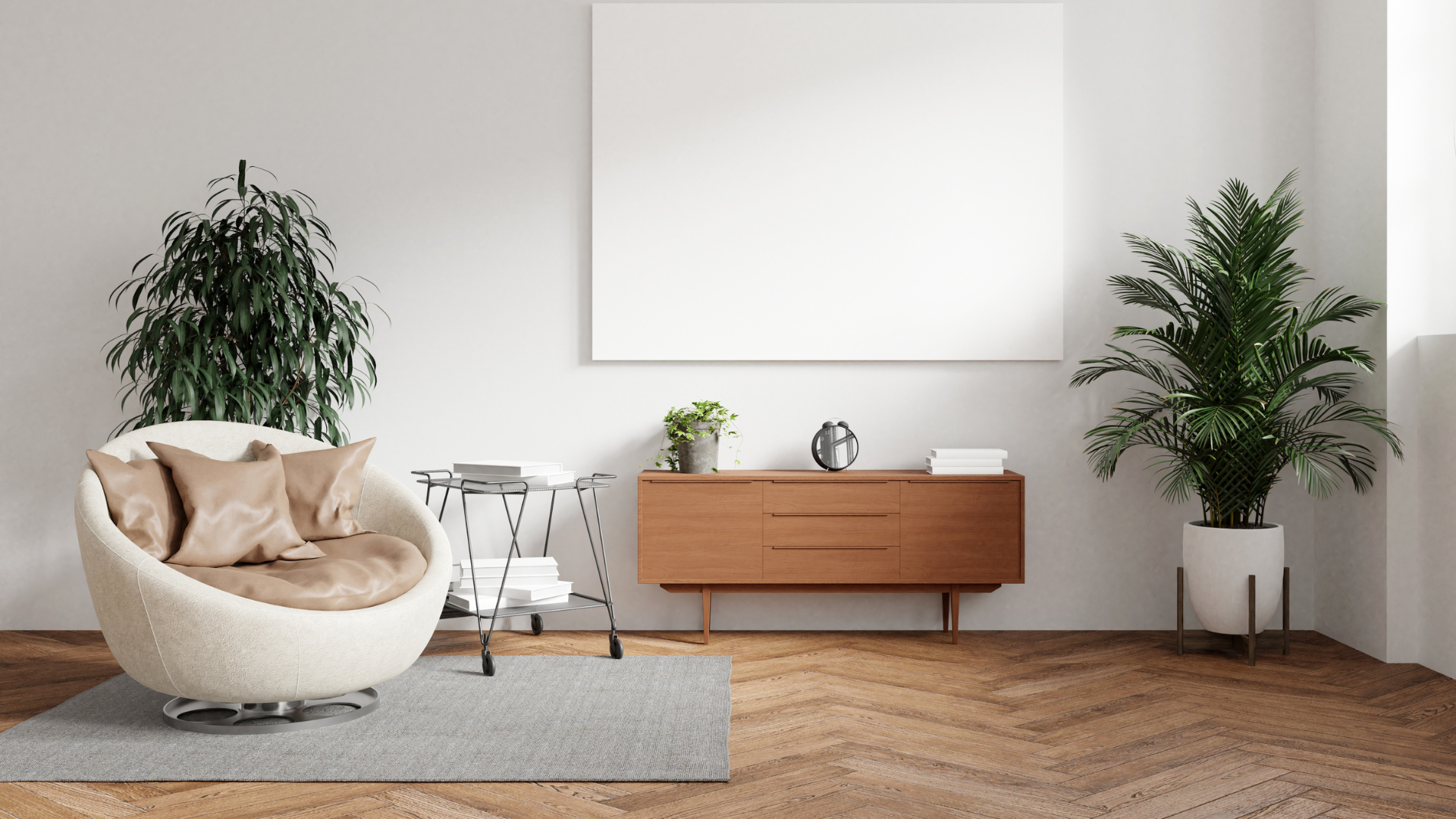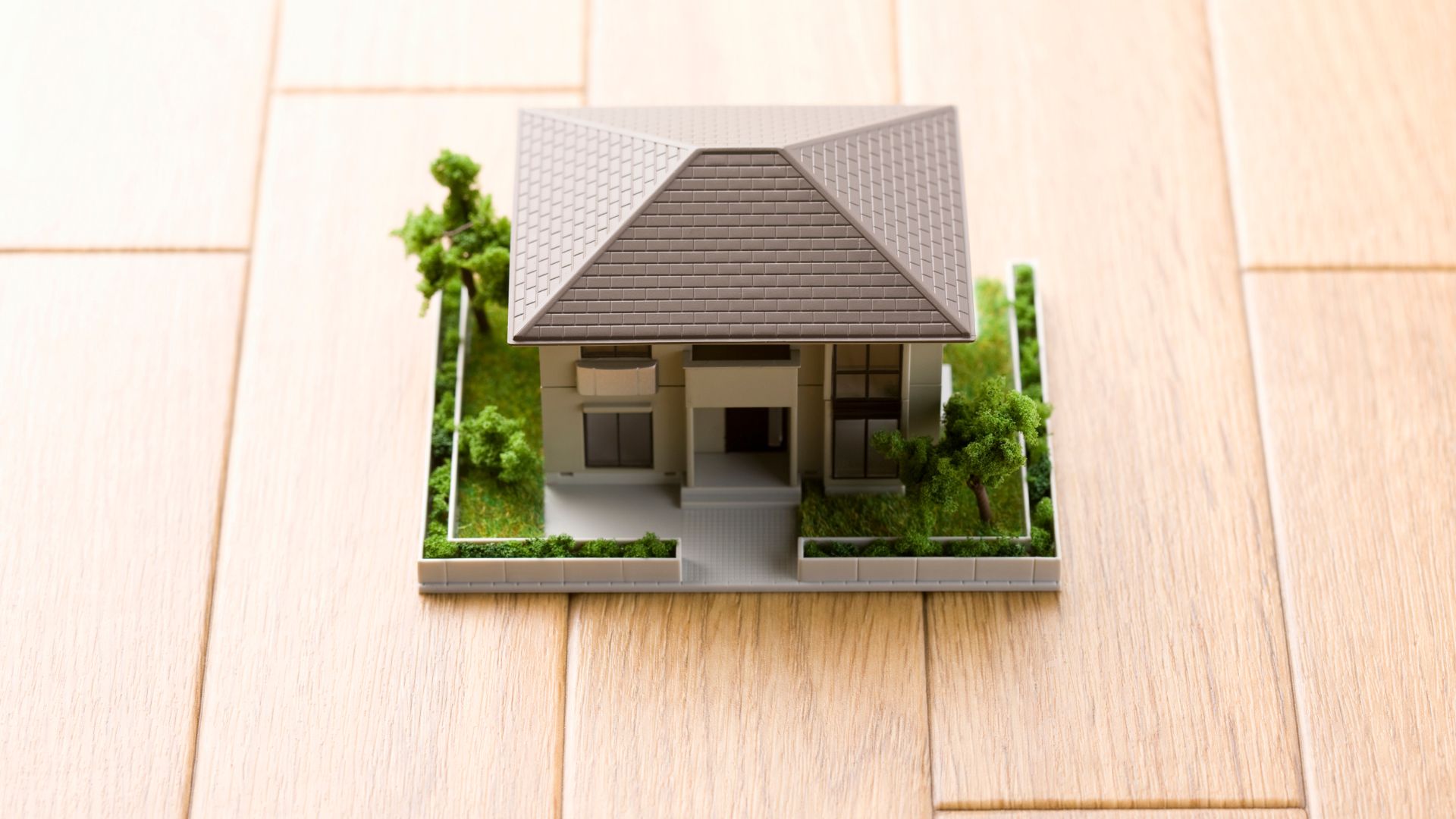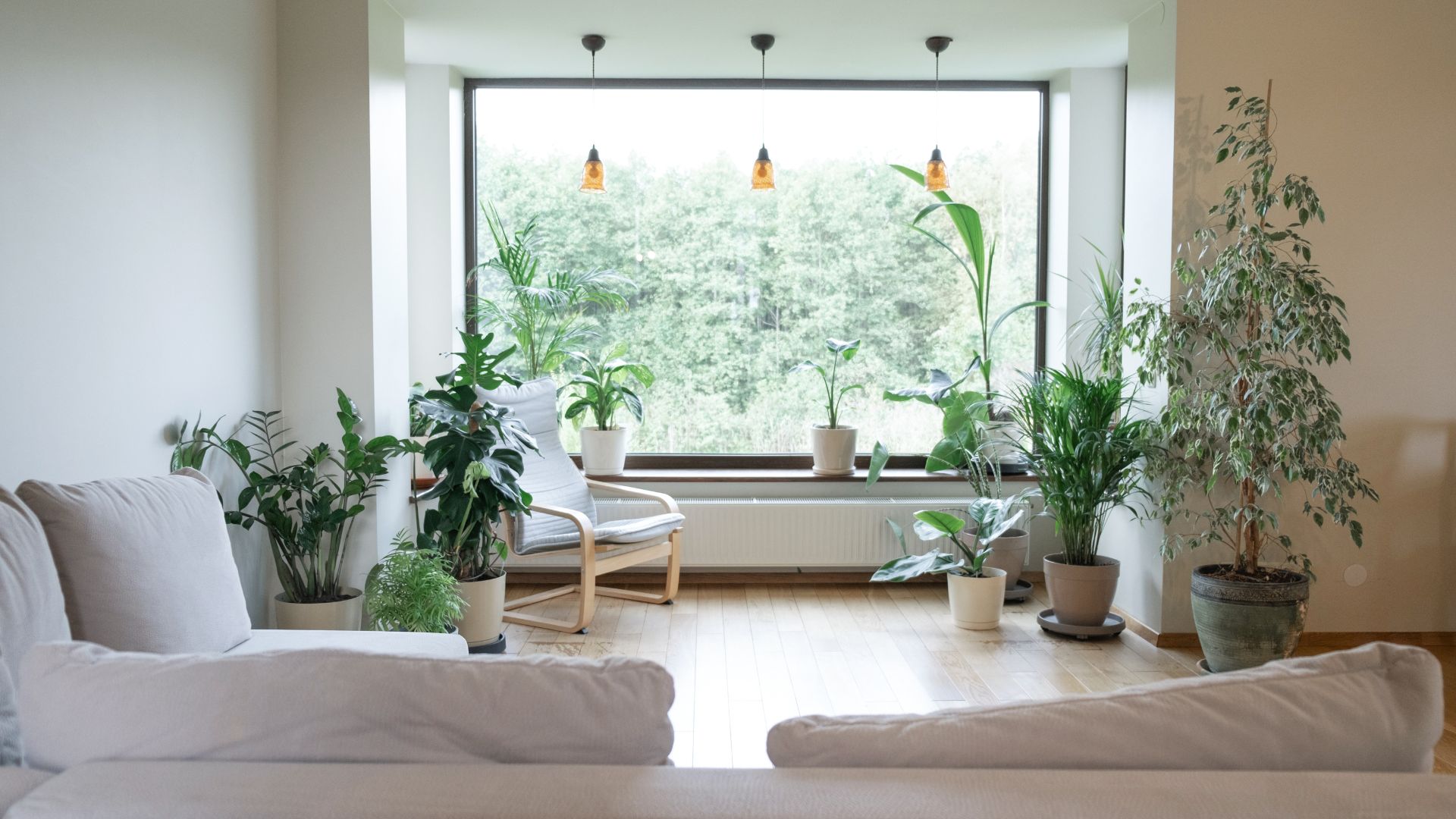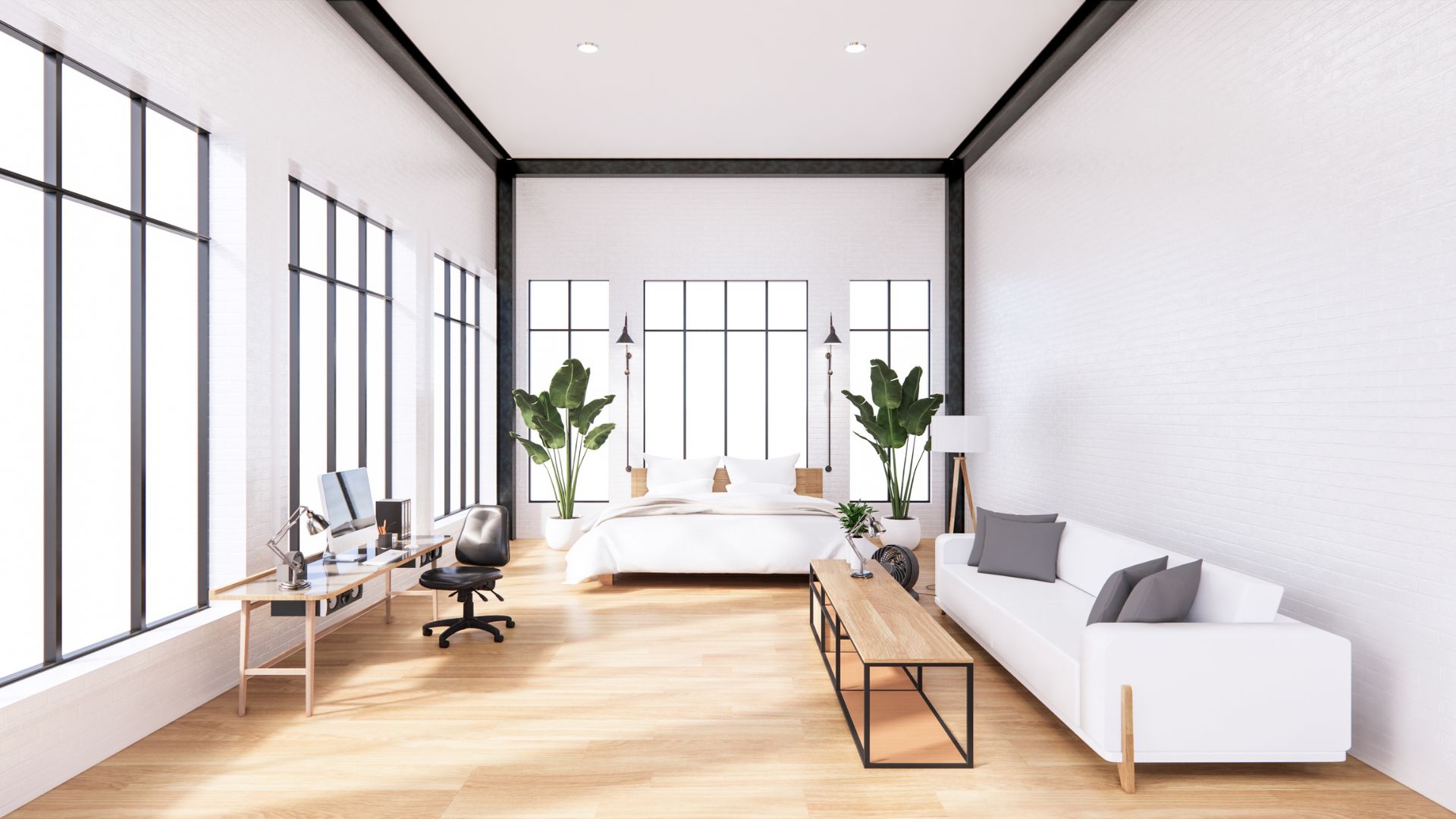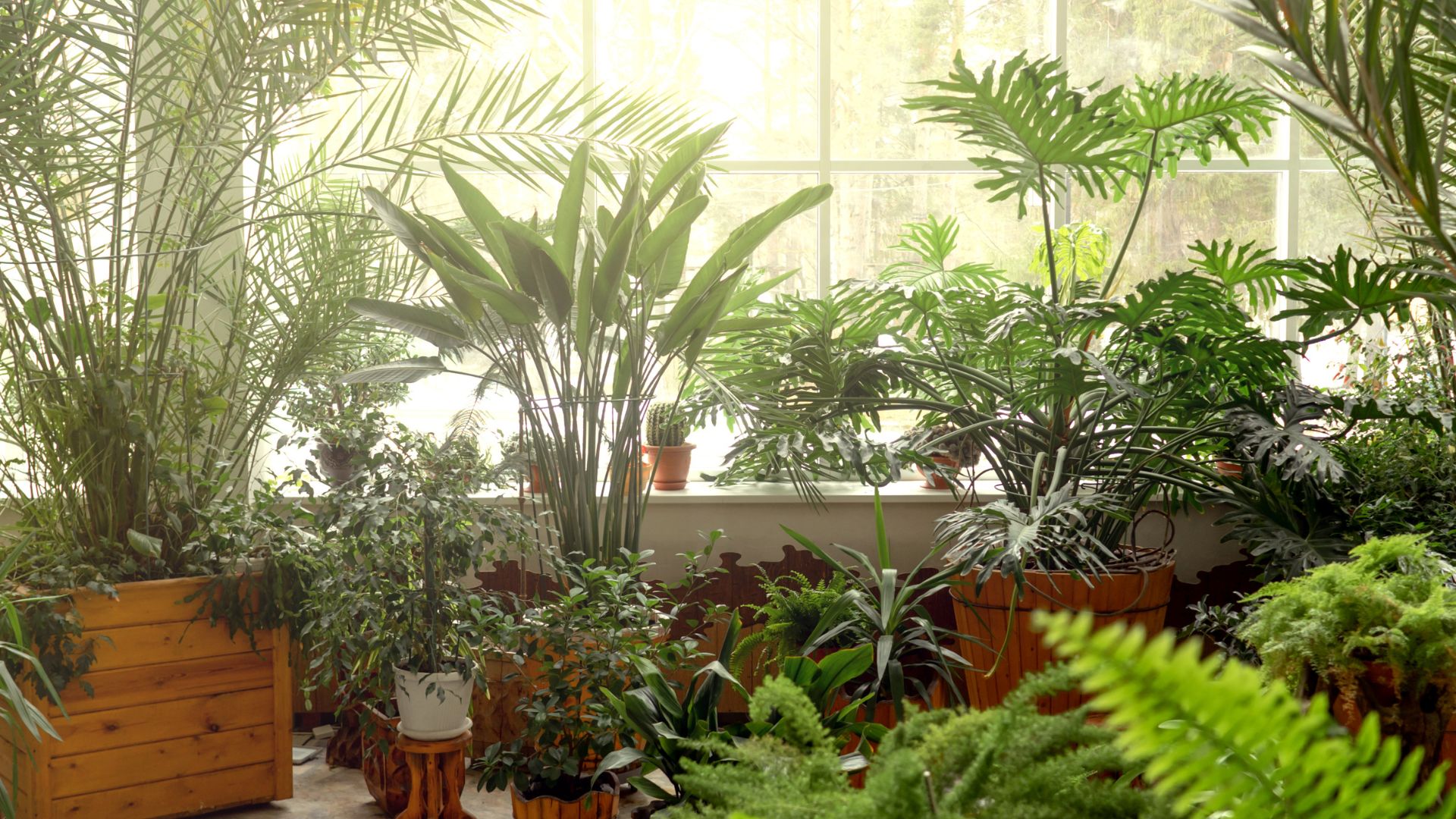Pillars of Biophilic Design
There are six core elements that form the pillars of biophilic design to infuse indoor spaces with nature.
Natural Light
Maximising natural sunlight is a core principle of biophilic design. Humans have an innate connection to daylight cycles. Natural light improves mood, focus, and sleep quality. Strategies include large windows, skylights, solar tubes, and glass walls. Consider sunlight angles at different times of the day.
Natural Ventilation
Allowing fresh outdoor air to circulate indoors reduces CO2 buildup and mould growth. Operable windows, ceiling fans, and air vents boost airflow. Careful placement ensures cross ventilation without drafts. Humidity control is key in tropical climates like Singapore’s.
Plants and Greenery
Incorporating a diversity of plant life brings nature indoors. Plants filter air, increase humidity, and provide calming views. Strategic placement of potted plants, living walls, conservatories, and green roofs enhances biophilia. Pick low-maintenance tropical houseplants suitable for Singapore’s climate.
Natural Materials
Materials from nature such as wood, stone, cork, and bamboo promote organic sensations. They add texture, create inviting spaces, and connect us to the natural world. Sustainable sourcing guarantees ecological benefits, too. Look for renewable, locally-sourced natural materials.
Nature Views
Providing views of living landscapes, ecosystems, and wildlife grounds people in nature. Strategies would include large picture windows, seating oriented towards views, and outdoor rooms. Bird-friendly practices let nature in. Frame views of Singapore’s vibrant tropical greenery.
Organic Shapes
Forms inspired by nature feel innate to people. Flowing lines, natural patterns, and irregular shapes subconsciously relax us. Avoid straight edges and hard angles. Incorporate tree-inspired pillars, shell-shaped lighting, wave-like tiles.


